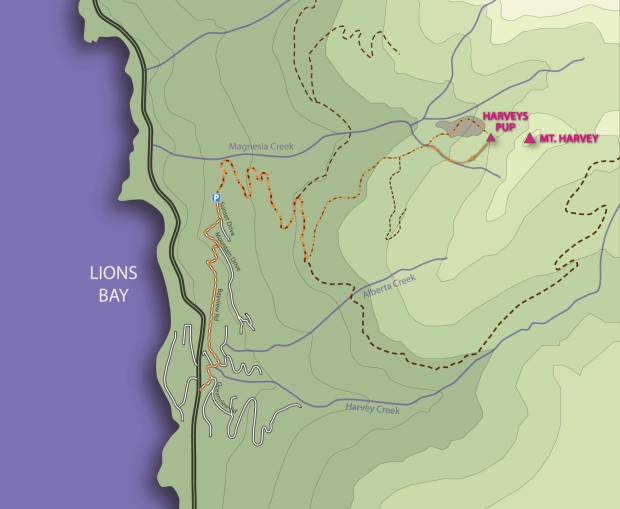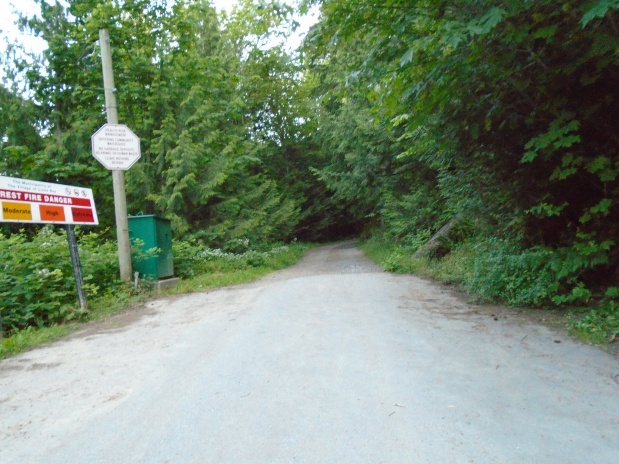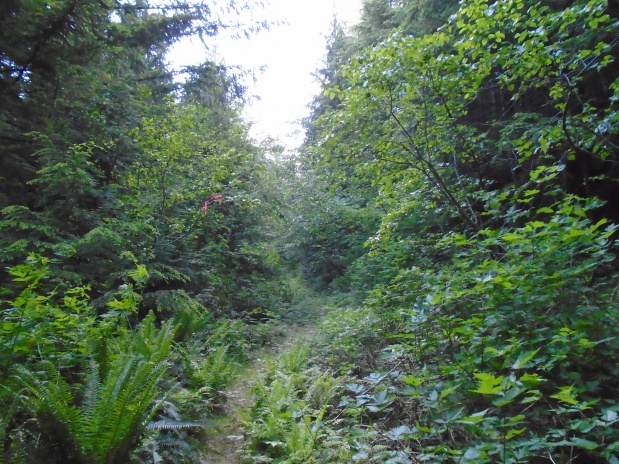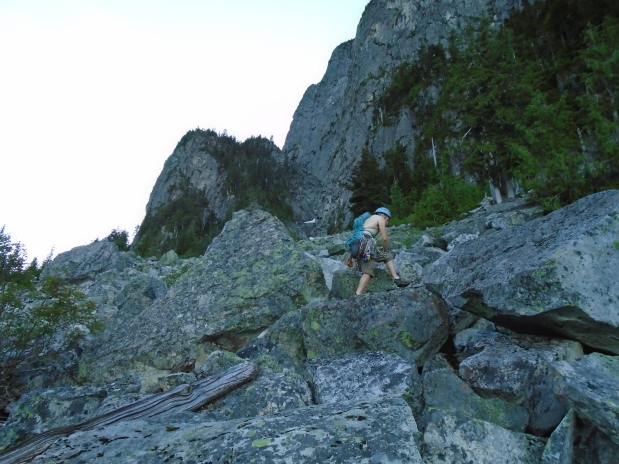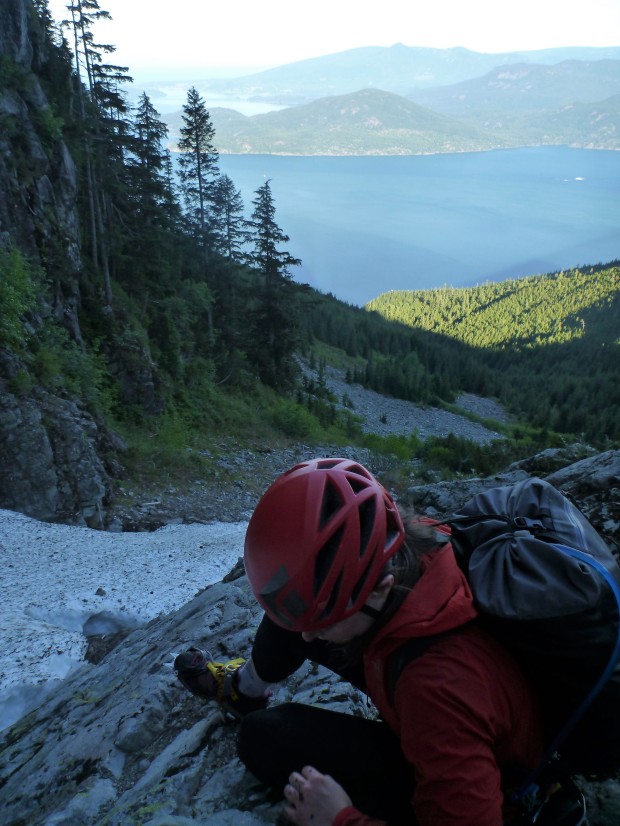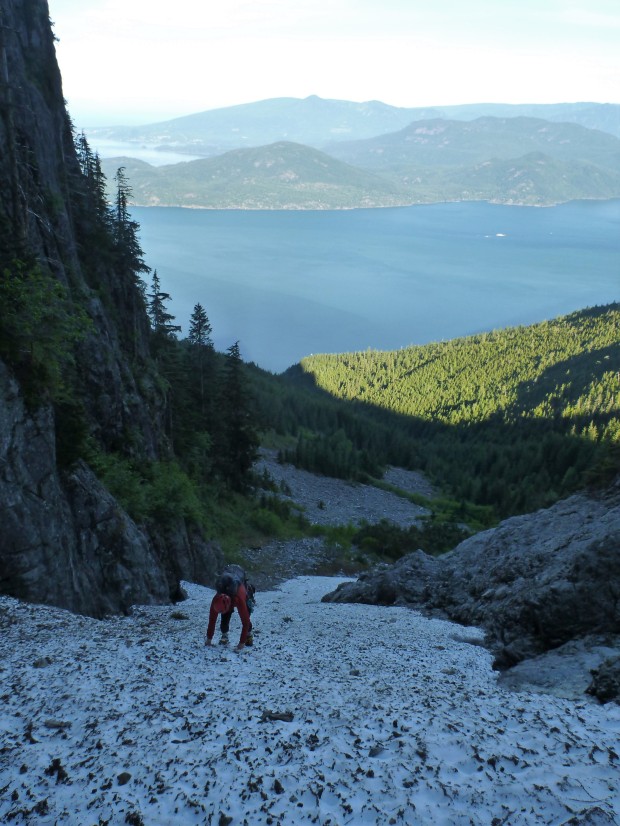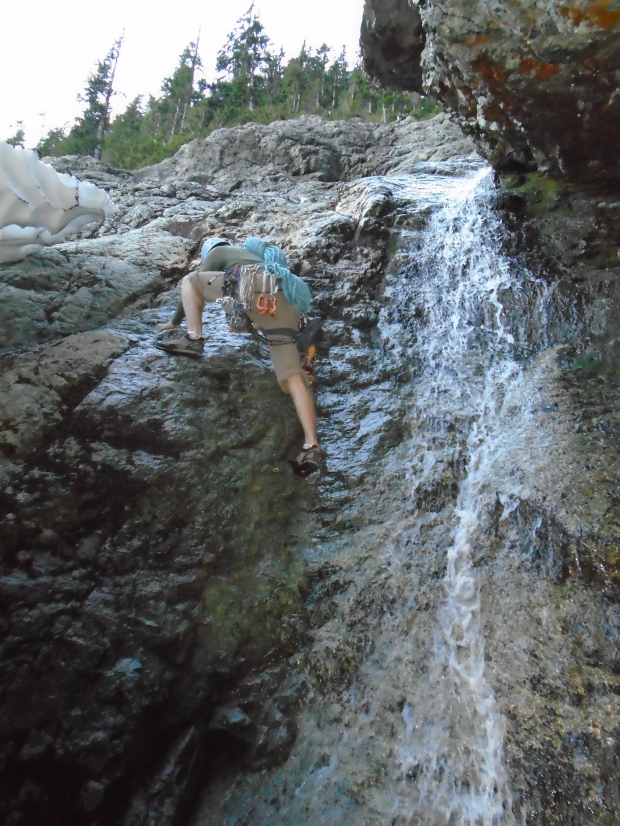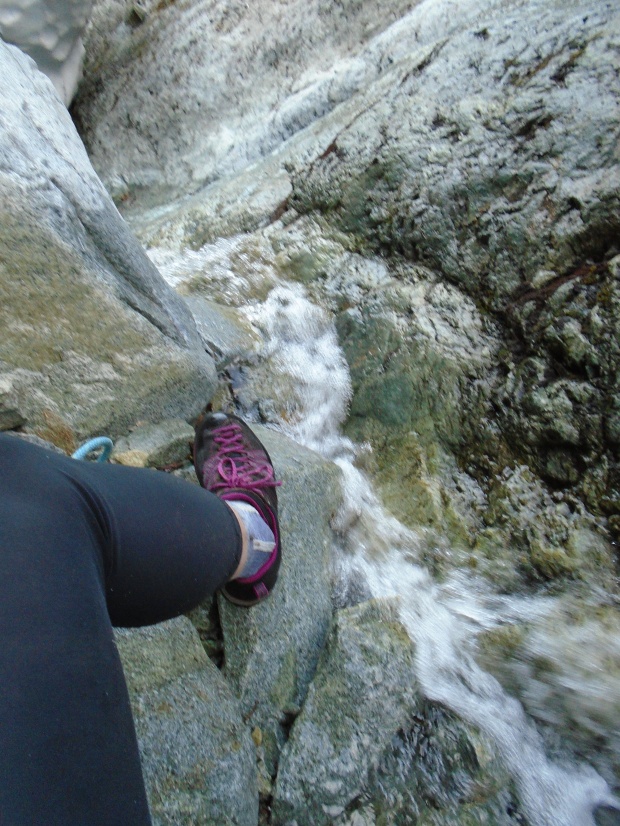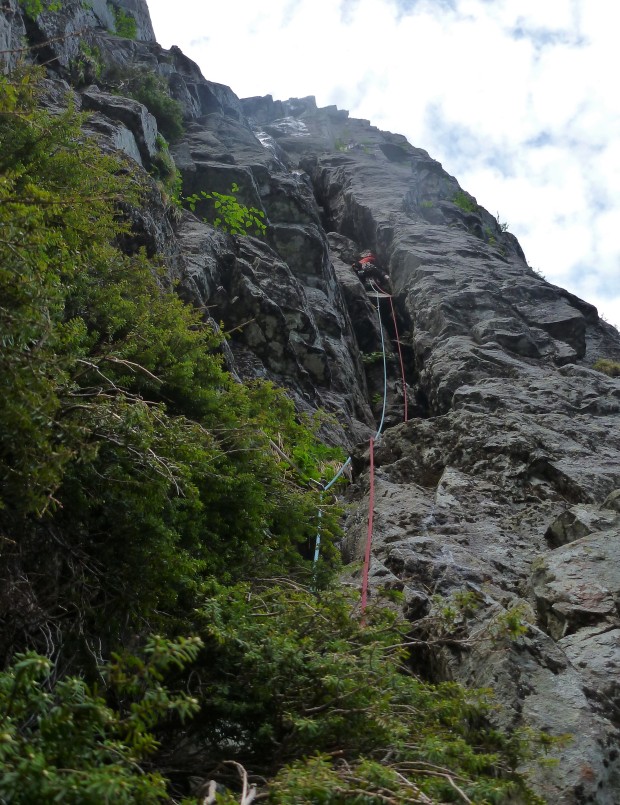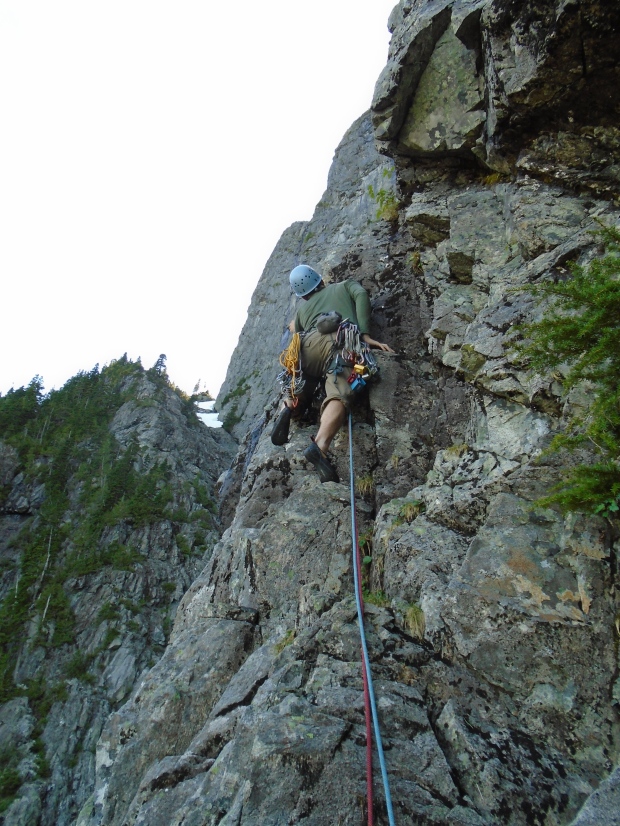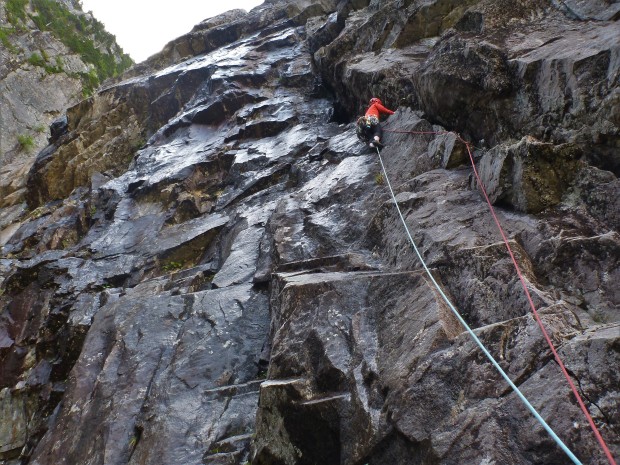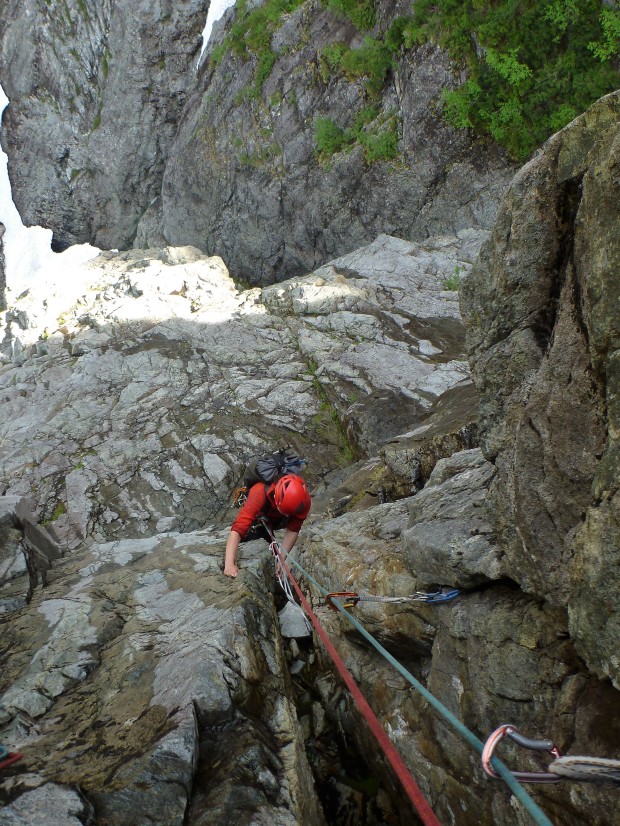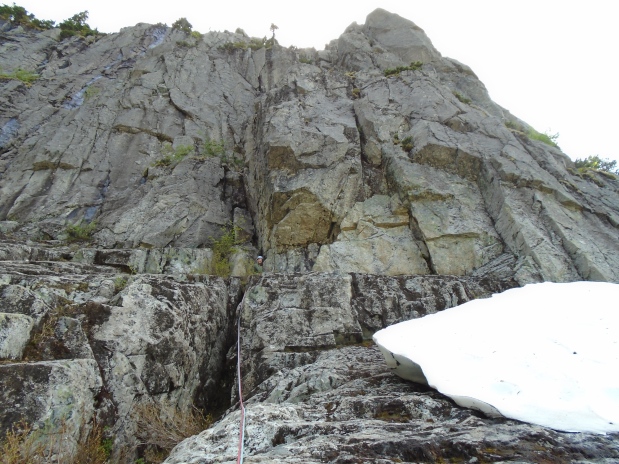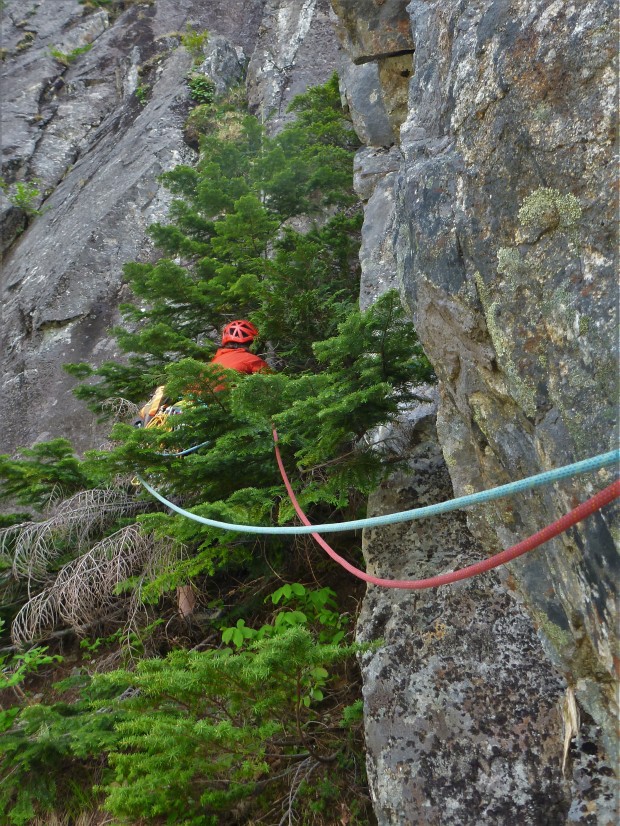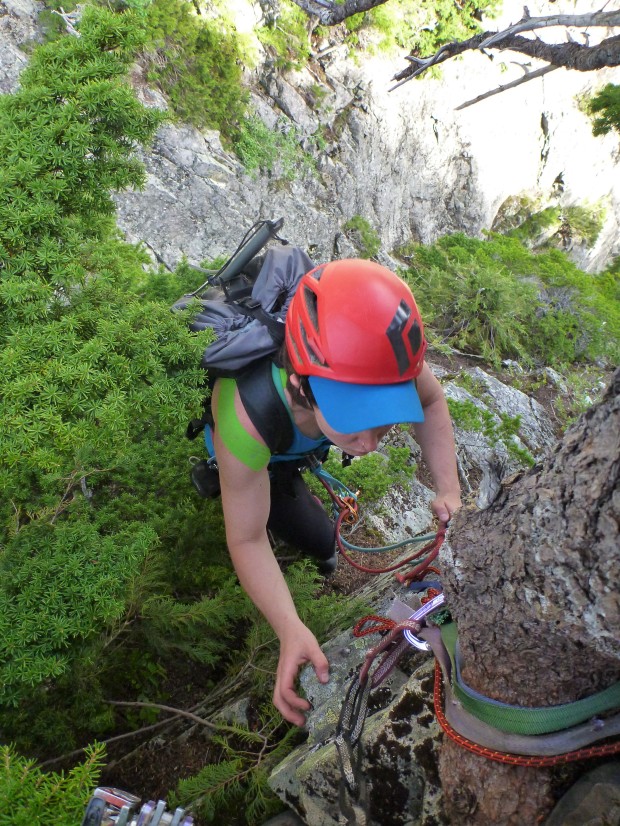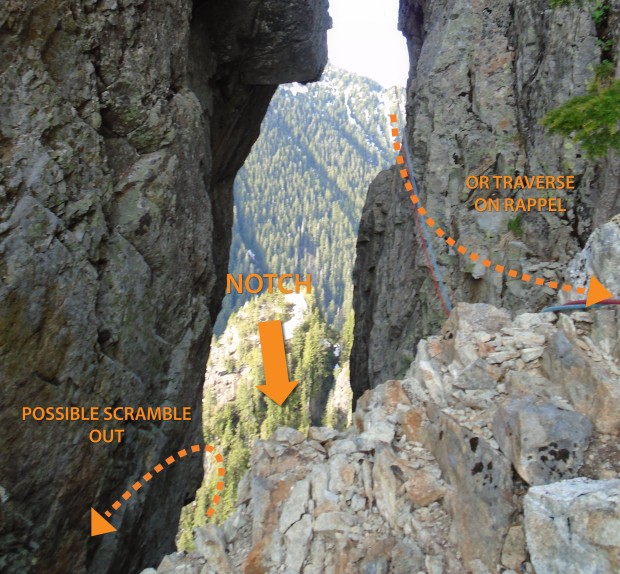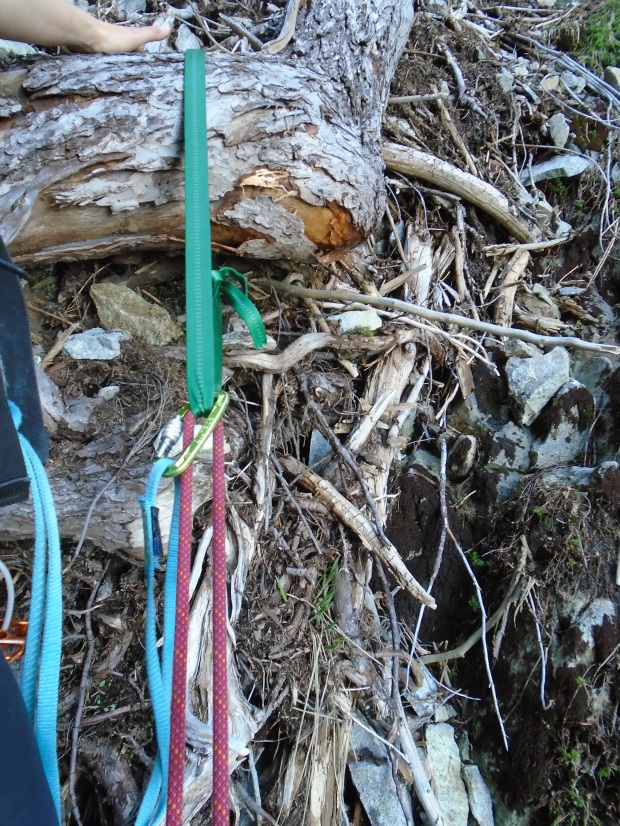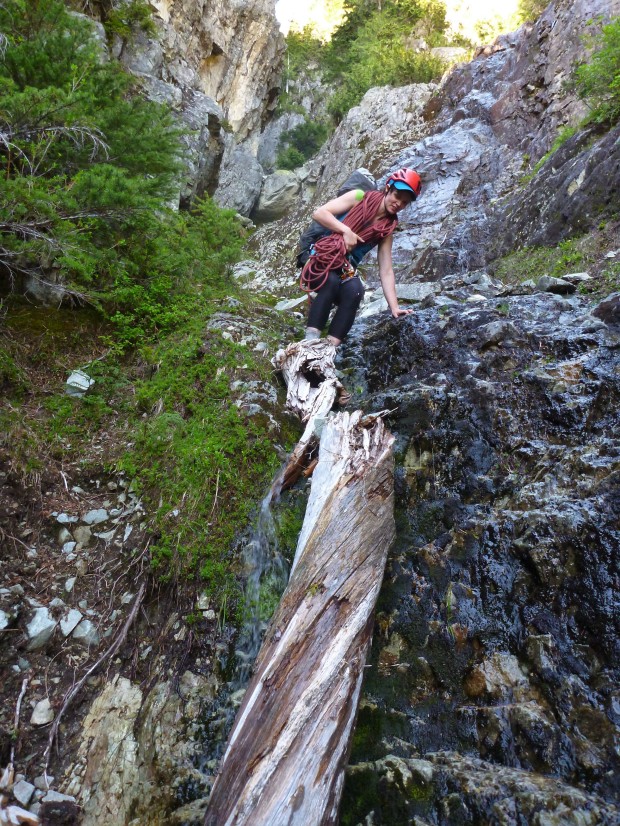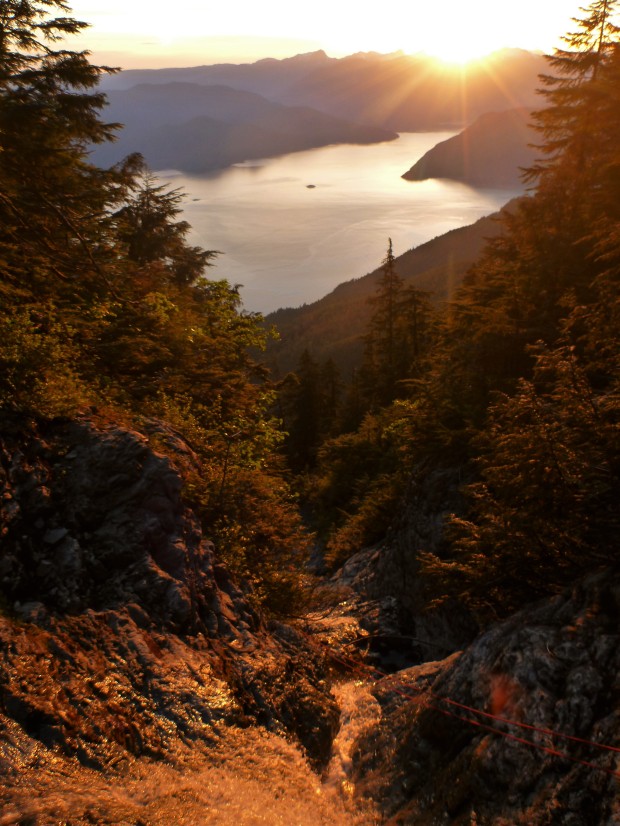I have been struggling with a shoulder injury for a while now which is holding me back from trying hard on any projects. Thankfully I can still climb moderately which has increased my thirst for alpine adventures. I figure if you go for an alpine adventure, the day is typically long and challenging but the level of climbing is often below your maximum, perfect for injured shoulders.
Unfortunately in late May/early June its a little early to gamble on most worthy and more far reaching alpine objectives and I’ve always had a guilty hankering for checking out some of the routes in my very own backyard despite the reputations for being not so great.
The release of the Vancouver rock climbing guide book brought this lurking hankering to the forefront of my wishlist with its nicely documented topo’s and detailed descriptions. I mentioned it to D who I knew shared some of the same perverse inspirations for suffering and epicing on cool adventures as me and as I hoped he took the bait and ran with it.
Mount Harvey sits in the North Shore Mountains east of Lions bay. A rock tower to the North West of the Mountain itself provides the Buttress for a 10 pitch North facing route called Harvey’s Pup. It was forecast to be in the high 20’s one Sunday in early June so we decided it wouldn’t be a terrible idea to go and check out this route despite knowing there could still be a lot of snow around or at least a lot of dampness on the route given snow melt run-off.
We made the decision to take an axe each and a set of crampons to put over our approach shoes as there was a high probability of there being snow/ice on the steep and slabby North ramp approach.
As we would be carrying more than normal with the snow gear and because we anticipated approach complications not to mention above normal wetness on the route we agreed on a very early start time to give us the best chances of having enough daylight.
I picked D up at 4.30 am and we pulled up in the Parking lot near the trail head on Sunset drive (Lions bay) just as it was getting light. The trail up to the route starts obviously up a wide dirt road and after the 7th switch back we turned off left on to a much more overgrown old road resembling a single track trail. We followed this road/path until you reach a large open talus field that spills down from a gully higher up.
This gully is where you will later descend so D and I decided to drop one pack here and just filled up my Alpha 30L with the gear we would take on the route. We harnessed up and I carried the pack with snow gear and one half rope, D back-packed the other rope and took the rack.
We crossed this gully and picked up the overgrown road on the other side. There is some flagging higher up, but it is important to ignore this and stay low initially. Eventually you’ll meet a boulder field that you follow to reach the approach slabs.
At the end of the boulder field the approach steepens to what would usually be 3rd class slabs. This is where we first encountered an impassable snow field and suited up with crampons and axes. The snow was harder than expected and a wrong footing at one point with aluminium crampons over soft approach shoes saw we go for a spin down the slope, I couldn’t self arrest in time and ended up landing in a shallow bergschrund, thankfully unharmed other than a few grazes. The going was sketchy and slow.
Once we were done with the snow we next tackled steep wet slabs, and by wet really there was practically a stream running down them from snow melt higher up. It took us a long time to figure out a route that we could safely scramble given the conditions and even then we pulled off some pretty sketchy moves that in hindsight should probably have deemed the rope necessary.
It’s actually pretty funny when you look up my friend Rich So’s blog about this route when he did it later in the season during a drier summer, the photos of the approach slabs make it look like we did two different routes!
Pitch 1.
We knew that the route started in a flat spot at the top of the slabs but unfortunately with all the snow and the stream it was kinda hard to detect that flat spot. Thankfully, we spotted what looked to be the bush at the belay station at the end of the first pitch and were able to agree that the traversey climbing leading up to it, under a big roof seemed congruous with the beta we’d read. The following is a terrible photo that I had to lighten a bunch to even be able to see D climbing, but hopefully it helps to show where the first pitch goes – up and under the roof, pulling on friable feeling – but positive holds to reach the bushy ledge.
Unfortunately the stream ran right through the flat spot where we assumed you would normally belay so I had to elevate myself in a small nook at the base of the buttress to keep the ropes (and my feet) out of the water!
D did a great job on this first pitch, the climbing was reasonably amiable at 5.9 but the gear was a little tricky and some of the holds felt pretty fragile – which was disconcerting given the feet were small and the angle steep so you really wanted to be able to yard on them.
Pitch 2.
This was my pitch and I was faced with a cool chimney with lots of blocky holds and features that favored my aversion to chimneying. Unfortunately, this pitch was utterly dripping with water also and by the time I had reached the belay ledge my back was soaked from pressing it against the left side of the chimney. Thankfully because it was such a hot day and I was only wearing my thin Squamish hoody windbreaker, I dried super quickly, which is good because I looked like a character from a really bad wet t-shirt contest! Despite the adverse conditions I still actually enjoyed this long pitch!
Pitch 3.
This is an easy pitch of climbing that heads up and left to the base of a dark head wall where the crux pitches start. The rock is surprisingly good and the climbing pleasant – follow the path of least resistance.
Pitch 4.
This pitch looked like it would be kind of cool – a big sweeping off-width and chimney with an abundance of holds – unfortunately most of them were soaking wet making the intricate smeary and stemmy foot moves at the crux much harder than they should have been. I had to aid my way through the last moves which was hard enough as by this point my hands were dripping with water and even pulling on slings and cams was slippery. I could have continued but by the point I spotted a small ledge out right I’d had enough and opted to belay D up from here (turns out I was in the right spot anyway)
Pitch 5.
It was D’s turn to enter the fun world of saturated aid climbing and he had another crux move to pull not far off the belay entering into the off width. Again this required some aid moves to get through. D set up a hanging belay at an existing 3-peg station in the chimneys above that had some existing blue cordalette nicely rigged. By this point we were both utterly drenched and hugely behind a normally anticipated schedule for 5 pitches of 5.9-10a climbing but we kept up good spirits, laughing at the ridiculousness of the situation we had actively chosen to enter into.
Pitch 6.
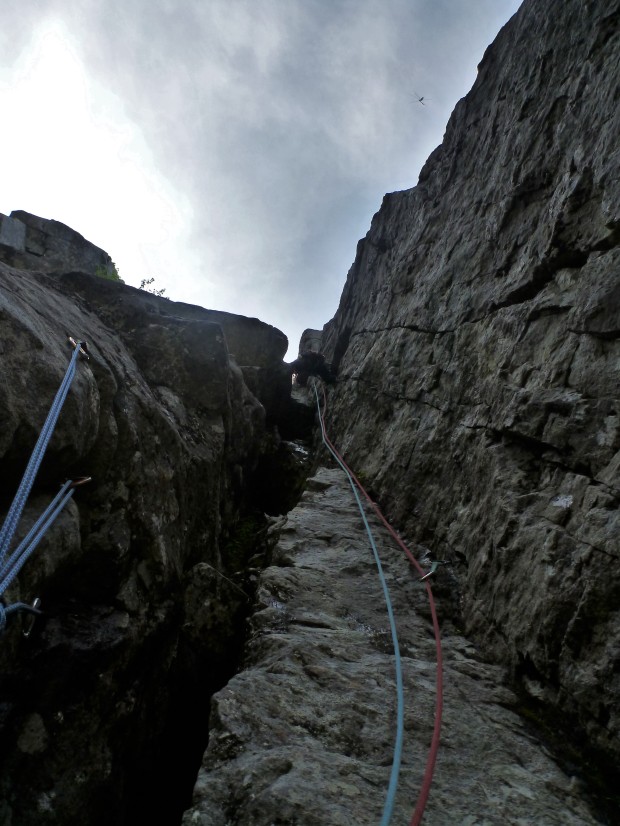
Me continuing up the chimney/offwidth for our 6th pitch. D had set up a hanging belay in the chimney on the blue cordalette and 3-pitons for the end of pitch 5 although some describe this as the end of pitch 4? Either way it worked out just fine for us in the end.
Pitch 7 on….
I continued on past the ledge that I assumed was supposed to be the belay at the end of P6 (only 10-15m or so above the piton anchor) and picked out a fun line on the left side of the wall on finger cracks and stems. It looks totally possible to climb this section on either side of the wide chimney. This was fun climbing. I went as far as I could before the rope drag was unbearable and managed to build a belay just before the angle kicked back and the route became much more vegetated.
When D came up to second he continued through past my belay and on through the easy angle vegetation to arrive at a short corner (without the rope drag, I think you could make it to this spot in one go)
From here on in the climbing deteriorated somewhat and the rock became much more loose. There seemed to be a few options of which route to take but we headed up and right from this corner on loose blocky chimney climbing. We belayed after getting as far as we could on rope drag – which often wasn’t as far as we liked. There was a lot of bush whacking, some tree climbing and a bit of blocky loose rock – real North Shore adventure climbing!! I think it took us 4 or possibly even 5 pitches to get to the summit from the belay pictured above, mostly because of rope drag through bushes.
When we reached the summit it was insanely hot and dry and you could feel the days 30 degree heat for the first time. It was about 5pm I think, a mere 12 hours since we’d left the car, but little did we know the fun had just started! The views from here were spectacular and I’d never had quite this vantage point over Howe Sound before, this made it all worthwhile.
We didn’t hang around on the top too long as we knew at least the first bit of the descent was quite involved with a cool looking rap into the canyon splitting the Pup Buttress and Mt Harvey. We headed east from the top to find an initial rap station from green tat that took us down to the next bench where we were hoping to find the canyon rap anchor. This first rappel involved pulling ropes in thick trees and bushes and was pretty tiring and time consuming. Rich so describes heading skiers left and down climbing slabs – perhaps its quicker if you can find this to go this way. We then headed through the bushes to the edge of the notch where we found a slung tree.
With two 60m half ropes we were able to reach the base of the notch although I did some traversing along the back wall here to engineer it so the we could head out of notch and into the gully in one go – I wasn’t sure if I was to descend right to the base of the notch if I could get out again – but since I have read that it is possible. It was fairly easy to traverse on rappel though luckily!
After this rappel we were in the gully proper and both remember reading that a few steeper steps higher in the gully would make a couple more rappels necessary. When we found more green tat threaded around trees we took the nod that these were probably the points requiring rappels.
Much like we found on the approach, the once described as ‘slabby gully down scramble’ sections were actually fully developed streams which often made down scrambling very sketchy and difficult and mostly just out-right impossible. We made way more rappels than suggested for this reason and got pretty desperate at times with our anchors leaving behind lots of extra tat and defaulting eventually to fancy slings when our tat ran out. Lower down the gully, where it seemed obvious that you could probably usually scramble happily, trees and anchor points became rather sparse so we got pretty inventive (and perhaps nearing on a little sketchy) with what to rap off.
Unsurprisingly all these rappels ate away at time rapidly and what was once a novel adventure with lots of daylight and warm temps higher up the gully was rapidly becoming a real chance at a benighted epic. Desperately rappelling through mini waterfalls off broken bush stumps was not something I was super excited about doing by daylight, but even less so by head-torch!! The other thing I had become acutely aware of also was that my apparent calmness toward the slightly harrowing situation was all based around the premise that the worst that could happen was getting benighted and having to wait around until first morning light to finish the descent. I had resolved that – if it did come to that – it wouldn’t be so bad since it was a super hot day out I could comfortably spend a few hours of darkness hanging out in the bush with my nice new Arcteryx Nuclei to keep me warm. However, since we were now soaked to the bone from descending waterfalls for hours I was realizing that this situation may not be so comfortable after all and could perhaps maybe even be a little dangerous.
We pressed on, slinging bushes and executing rappels with a sense of urgency and scrambling sketchy wet rock where we could. With each rappel we prayed it would be our last and that the terrain would ease to scramble-able. Thankfully the steepness eased enough so that we could boulder hop the very last section in haste and just before the light faded completely D let out a sigh of relief as he spotted our bags.
Relieved that we would now be on a well-worn trail from here on in we relaxed a little as we re-packed the bags but since it was now pitch black and we still had at least an hour of descending to go we didn’t hang around too much.
We reached the car at 11pm on that Sunday night. 18 hours after we had left it that morning. My feet throbbed and my stomach growled but tiredness won out to eating – you know you’re exhausted when even Lucy’s 24 hour diner pancakes can’t tempt you away from your bed. Monday morning in work was a real struggle but had that happy justification by getting through yet another epic adventure with a fitting partner. Thanks to D for being willing to entertain another hair-brained idea. Harvey’s Pup may not be the most beautiful line or most solid rock, but if you’re a local looking for an adventure on a hot day, don’t over look the stuff in your very own back yard! Is that a recommendation??…Who know’s….



